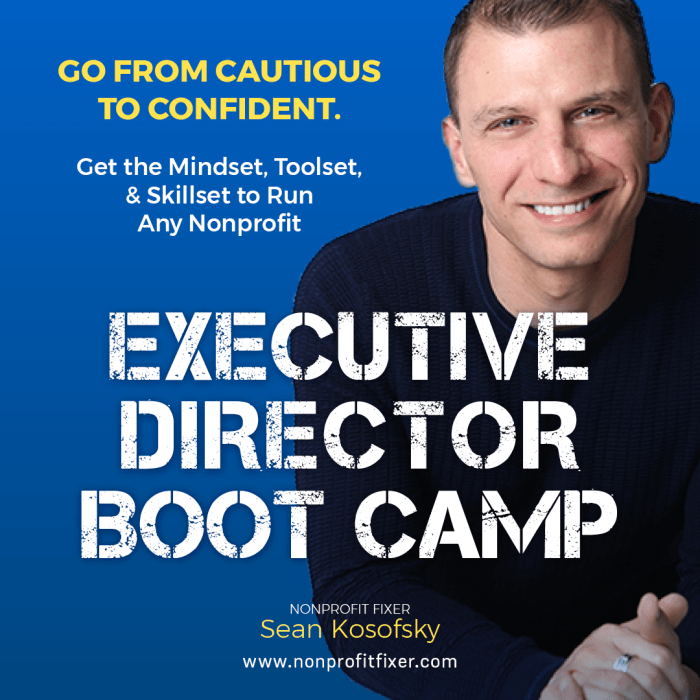Think you’ve got what it takes to lead a nonprofit? You’re about to step into a world where passion meets purpose, and you’re the captain of the ship. This guide is your roadmap to navigating the exciting, sometimes chaotic, world of nonprofit leadership.
Get ready to learn the ropes, master the art of fundraising, and become a champion for the cause.
We’ll dive into the unique challenges and opportunities that await new nonprofit CEOs, covering everything from building relationships with your board and staff to creating a winning fundraising strategy. We’ll explore the ins and outs of program development, financial management, and measuring your impact – all while keeping your organization’s mission front and center.
So buckle up, it’s going to be a wild ride!
Navigating the Nonprofit Landscape
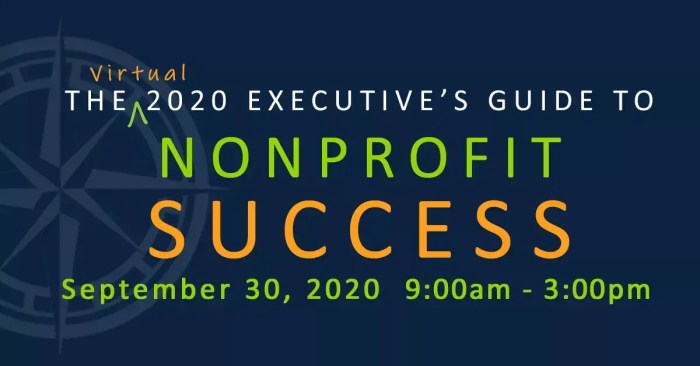
Being a new CEO of a nonprofit organization is a unique and exciting challenge. You’ll be leading an organization dedicated to making a difference in the world, but you’ll also face a complex and ever-changing landscape. This guide will equip you with the knowledge and skills you need to navigate this landscape successfully, building a strong foundation for your leadership.
Understanding the Nonprofit Sector
The nonprofit sector is a diverse and vibrant ecosystem with a wide range of organizations, each addressing a unique set of social needs. It’s crucial to understand the sector’s structure, funding models, and key stakeholders to effectively lead your organization.The nonprofit sector is composed of organizations that are:* Mission-driven:They exist to serve a public benefit, addressing social issues, promoting arts and culture, or advancing research.
Non-profit-distributing
Profits generated are reinvested back into the organization to further its mission, not distributed to owners or shareholders.
Tax-exempt
They are granted special tax status by the government, meaning they are exempt from paying federal income tax.
Funding Models
Nonprofits rely on a variety of funding sources, including:* Grants:Funding provided by foundations, government agencies, and corporations for specific projects or programs.
Individual donations
Contributions from individuals, often motivated by personal values or a connection to the organization’s mission.
Corporate sponsorships
Financial support provided by companies to promote their brand and support the nonprofit’s work.
Events and fundraising
Activities like galas, auctions, and online campaigns designed to generate revenue for the organization.
Program fees
Charges for services provided by the organization, such as educational programs or healthcare services.
Key Stakeholders
Effective leadership requires understanding and nurturing relationships with key stakeholders, including:* Board of Directors:Responsible for overseeing the organization’s strategic direction, financial health, and legal compliance.
Staff
The organization’s employees, who carry out the day-to-day operations and deliver programs.
Donors
Individuals, foundations, and corporations who provide financial support to the organization.
Beneficiaries
So, you’re thinking about taking the reins as a nonprofit CEO? That’s awesome, but let’s be real, it’s a whole different ball game than your last gig. You’ll need all the help you can get, and that’s where “The Ultimate Guide for New Nonprofit CEOs” comes in.
Think of it as a guidebook for navigating the crazy world of non-profits, complete with tips on fundraising, building a team, and keeping those donations flowing. And hey, if you need a little stress relief, why not try learning some holiday tunes on the recorder?
Check out this awesome resource for Super Easy Christmas Recorder Sheet Music for Beginners 25 Christmas Carols with Recorder Finger Charts—Jingle Bells Away in a Manger and More! (Large Print Letter Notes Sheet Music). It’s got everything you need to rock those Christmas carols, and trust me, it’s way easier than you think.
Now, back to that guidebook…
The individuals or communities who benefit from the organization’s services.
Government agencies
Regulators and funders who play a role in shaping the nonprofit landscape.
Building a Strong Foundation
As a new CEO, it’s essential to establish a strong foundation for your leadership by building trust and collaboration with your board, staff, and donors.
Building Relationships with the Board
Clear Communication
So you’re the new boss at a non-profit, huh? Congrats, but that’s a whole lotta responsibility. You need all the tips and tricks you can get, right? Well, check out “The Ultimate Guide for New Nonprofit CEOs,” and get ready to level up your leadership game.
You can Download And Listen Here to get the lowdown on everything from fundraising to building a strong team. This guide is like the cheat code to running a successful non-profit, so get ready to dominate!
Establish open and frequent communication channels with the board, providing regular updates on the organization’s progress and challenges.
Shared Vision
Ensure alignment between the board’s vision and your strategic goals for the organization.
Effective Governance
Understand and adhere to the board’s governance structure, policies, and responsibilities.
Active Engagement
Encourage active participation from board members, fostering a collaborative and engaged board.
Building Relationships with Staff
Open and Honest Communication
Create a culture of open and honest communication, fostering a sense of transparency and trust.
Empowerment and Delegation
Empower staff by delegating responsibilities and providing opportunities for growth and development.
Recognition and Appreciation
Acknowledge and appreciate the contributions of staff, creating a positive and supportive work environment.
Clear Expectations
Set clear expectations for performance and behavior, ensuring everyone is aligned on goals and responsibilities.
Building Relationships with Donors
Transparency and Accountability
Be transparent about the organization’s finances, programs, and impact, demonstrating accountability to donors.
Engaging Communication
Communicate effectively with donors, sharing stories of impact and providing regular updates on the organization’s progress.
Donor Appreciation
Show appreciation for donors through personalized thank-you notes, invitations to events, and opportunities to connect with the organization’s work.
Cultivating Relationships
Invest in building long-term relationships with donors, fostering a sense of partnership and shared purpose.
Being a nonprofit CEO is a tough gig, and “The Ultimate Guide for New Nonprofit CEOs” can be a real lifesaver. It’s like having a personal cheerleader in your pocket, but instead of yelling “Go team!” it’s more like, “Here’s how to navigate the tricky world of fundraising and board management.” And while the guide is super helpful, sometimes you just need a little self-care to recharge.
That’s where the Positive Affirmation Coloring Book for Black Women comes in. It’s like a therapy session for your inner queen, and it’ll help you slay those board meetings with confidence! So, grab the guide, grab your crayons, and get ready to rock the nonprofit world!
Strategic Leadership and Management
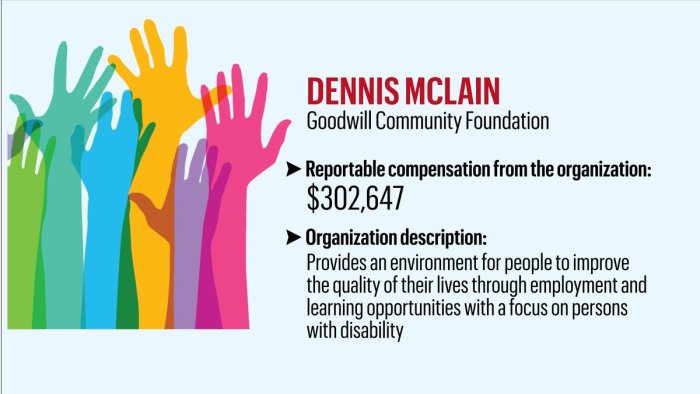
Being a nonprofit CEO is like being the captain of a ship navigating uncharted waters. You need a clear vision and a solid plan to guide your crew and ensure the organization reaches its destination. This section explores the essential elements of strategic leadership and management for nonprofit CEOs.
Defining the Organization’s Purpose
A clear vision and mission are crucial for any organization, but especially for nonprofits. The vision Artikels the organization’s long-term goals, while the mission defines its purpose and how it will achieve its goals. A well-defined vision and mission act as a compass, guiding decision-making and aligning the organization’s activities.
“A vision is a dream with a deadline.”George S. Patton
Here are some steps to develop a clear vision and mission:
- Engage Stakeholders:Involve board members, staff, volunteers, and beneficiaries in the process. This ensures everyone understands the organization’s purpose and feels invested in its success.
- Define the Problem:Identify the social issue the organization addresses. This will help focus the vision and mission on the organization’s impact.
- Set Ambitious Goals:A strong vision should be aspirational and inspire action. It should be ambitious enough to challenge the organization but achievable with focused effort.
- Communicate Effectively:Once the vision and mission are defined, it’s crucial to communicate them clearly and consistently to all stakeholders. This ensures everyone is on the same page and working towards the same goals.
Strategic Planning
A strategic plan provides a roadmap for achieving the organization’s vision and mission. It Artikels the organization’s key goals, strategies, and action plans.
- Program Development:The strategic plan should Artikel the organization’s program offerings and how they align with its mission. This includes identifying target beneficiaries, program goals, and evaluation methods.
- Fundraising:A successful strategic plan includes a comprehensive fundraising strategy. This involves identifying potential funding sources, developing compelling proposals, and managing donor relationships.
- Organizational Growth:The strategic plan should address the organization’s growth plans, including staff expansion, program expansion, and geographic reach.
Effective Leadership Styles
Nonprofit CEOs need to be adaptable leaders who can motivate and engage staff while fostering a collaborative and supportive environment.
- Transformational Leadership:This style focuses on inspiring and motivating staff by setting a clear vision and communicating the organization’s values. Transformational leaders empower their teams to take ownership and contribute to the organization’s success.
- Servant Leadership:Servant leaders prioritize the needs of their staff and the organization’s beneficiaries. They create a culture of trust and respect, empowering staff to contribute their best work.
- Delegation:Effective leaders delegate tasks and responsibilities to their staff, empowering them to develop their skills and take ownership of their work.
- Communication:Clear and open communication is essential for effective leadership. CEOs need to communicate effectively with staff, board members, donors, and beneficiaries to ensure everyone is informed and aligned with the organization’s goals.
Building a Sustainable Culture
A strong organizational culture is essential for attracting and retaining talented staff, fostering innovation, and achieving long-term success.
- Define Values:The organization’s values should guide its decision-making and shape its culture. These values should be clearly articulated and communicated to all stakeholders.
- Promote Collaboration:A culture of collaboration encourages teamwork and shared decision-making. This fosters a sense of community and empowers staff to contribute their best work.
- Embrace Diversity:A diverse and inclusive culture welcomes people from different backgrounds, perspectives, and experiences. This enriches the organization’s decision-making and problem-solving abilities.
- Encourage Innovation:A culture of innovation encourages creativity and risk-taking. This allows the organization to adapt to changing circumstances and find new solutions to challenges.
Fundraising and Financial Management

Nonprofit organizations rely heavily on fundraising to achieve their mission and deliver programs and services. Financial management is the backbone of any successful nonprofit, ensuring sustainability and accountability.
Fundraising Strategies
Fundraising is the art of securing financial resources from various sources to support the organization’s mission.
- Grant Writing:Grant writing involves crafting compelling proposals to secure funding from foundations, government agencies, and corporations.
- Individual Giving:Cultivating relationships with individual donors, including major donors and recurring givers, is crucial for long-term financial stability.
- Corporate Partnerships:Building partnerships with corporations can lead to valuable funding, in-kind donations, and volunteer opportunities.
Creating Compelling Fundraising Proposals
A well-crafted fundraising proposal is essential for attracting funding.
- Clearly Define the Need:Start by outlining the problem or need that your organization addresses and why it’s important.
- Demonstrate Impact:Highlight the organization’s achievements and the positive impact it has made on the community.
- Provide a Budget:Present a detailed budget outlining how the funds will be used to achieve the proposed project’s goals.
- Explain Sustainability:Address how the organization will continue to operate and achieve its mission after the grant period ends.
Building a Strong Donor Base
A robust donor base is crucial for a nonprofit’s financial health.
- Develop a Donor-Centric Approach:Focus on understanding donor motivations and providing meaningful engagement opportunities.
- Implement a Donor Management System:Utilize software to track donor information, preferences, and interactions to personalize communications.
- Cultivate Relationships:Regularly communicate with donors, express gratitude, and keep them informed about the organization’s impact.
Financial Management
Sound financial management is essential for ensuring the organization’s long-term sustainability and accountability.
- Budgeting:Develop a comprehensive budget that reflects the organization’s programs, expenses, and revenue projections.
- Financial Reporting:Prepare accurate and timely financial reports to provide transparency to donors, board members, and other stakeholders.
- Compliance with Regulations:Adhere to all applicable federal, state, and local regulations governing nonprofit organizations, including tax-exempt status.
Managing the Organization’s Finances
Effective financial management involves a systematic approach.
- Develop a Financial Policy Manual:Create a comprehensive manual outlining the organization’s financial policies, procedures, and controls.
- Establish a Financial Oversight Committee:Form a committee composed of board members and financial experts to provide guidance and oversight.
- Implement Internal Controls:Establish strong internal controls to prevent fraud, waste, and abuse of resources.
- Regularly Review and Update Financial Practices:Conduct periodic reviews of financial practices and procedures to ensure they remain effective and efficient.
Program Development and Impact Measurement

As the CEO of a nonprofit, you’re not just managing an organization; you’re leading a movement to make a difference in the world. Your programs are the heart of that movement, and they need to be carefully designed, implemented, and measured to ensure they’re truly achieving their intended impact.
This section will guide you through the process of developing and evaluating programs that deliver real results.
Designing Effective Programs
Programs are the vehicles that carry your nonprofit’s mission into action. To create programs that are effective, you need to start with a clear understanding of your organization’s mission and the needs of the community you serve.
- Needs Assessment:This is the foundation of program design. Conduct thorough research to identify the specific challenges and opportunities your program will address. This could involve surveys, focus groups, interviews, or reviewing existing data.
- Program Goals and Objectives:Clearly define the desired outcomes of your program. What changes do you want to see in the lives of your beneficiaries? Goals should be broad and aspirational, while objectives are specific, measurable, achievable, relevant, and time-bound (SMART).
- Program Activities:Develop a detailed plan outlining the activities that will be implemented to achieve your program’s goals and objectives. These activities should be practical, feasible, and aligned with your resources.
- Target Audience:Who will your program serve? Define your target audience based on their demographics, needs, and characteristics.
- Program Timeline and Budget:Establish a realistic timeline for implementing your program and create a detailed budget that Artikels the necessary resources and funding requirements.
Evaluating Program Impact
You’ve designed your program, put it into action, and now it’s time to assess its impact. This is where you demonstrate the value of your organization’s work to donors, stakeholders, and the community.
- Outcome-Oriented Measurement:Focus on measuring the actual changes or results your program has achieved, not just the activities completed. For example, instead of measuring the number of workshops conducted, measure the increase in participants’ knowledge or skills.
- Data Collection Methods:Choose appropriate methods to collect data on your program’s impact. This could include surveys, interviews, focus groups, observations, or reviewing existing data.
- Baseline Data:Establish a baseline measurement of the situation before your program began. This will provide a point of comparison to assess the program’s impact.
- Quantitative and Qualitative Data:Gather both quantitative (numerical) and qualitative (descriptive) data to provide a comprehensive understanding of your program’s impact.
- Data Analysis:Use statistical methods or qualitative analysis techniques to interpret the data and draw meaningful conclusions about your program’s effectiveness.
Documenting and Showcasing Program Outcomes
You’ve collected the data, analyzed it, and now it’s time to share your program’s success story with the world. This is where you build trust and attract support for your organization.
- Program Reports:Develop comprehensive reports that document your program’s activities, outcomes, and impact. Use clear language and visuals to make your data accessible and engaging.
- Success Stories:Highlight individual stories of how your program has made a positive difference in the lives of your beneficiaries. These stories bring your data to life and resonate with donors and stakeholders.
- Data Visualization:Use charts, graphs, and infographics to present your data in a visually appealing and understandable way.
- Website and Social Media:Share your program’s achievements on your website, social media platforms, and other communication channels.
- Presentations and Events:Present your program’s impact at conferences, fundraising events, and other gatherings.
Book Review: “The Nonprofit Handbook” by BoardSource
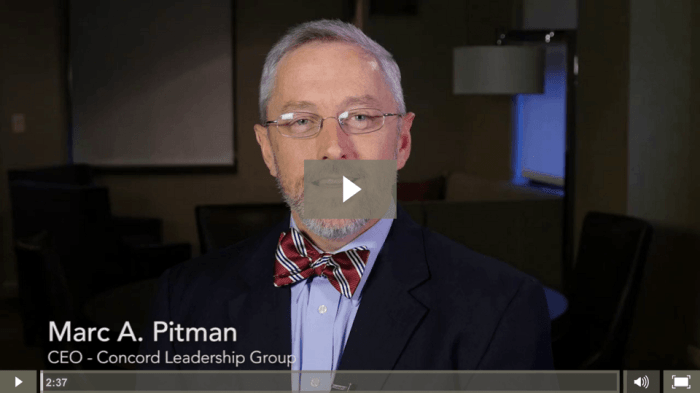
The “Nonprofit Handbook” by BoardSource is a comprehensive guide for nonprofit leaders, offering practical advice and insights on navigating the complex world of nonprofit management. This book serves as a valuable resource for new nonprofit CEOs, providing guidance on various aspects of leadership, governance, and organizational effectiveness.
Running a nonprofit can be a wild ride, like navigating a stormy sea. You’re constantly trying to keep your ship afloat, juggling budgets, fundraising, and making sure your mission stays on course. If you’re feeling lost at sea, check out “We Ran Away to Sea A Memoir and Letters” We Ran Away to Sea A Memoir and Letters , a captivating story about a family’s adventurous journey.
It might just inspire you to find your own sea legs and chart a course for success in the world of nonprofits.
Key Takeaways from the Book
The book provides a wealth of information on critical aspects of nonprofit leadership, including:
- Strategic Planning and Governance:The book emphasizes the importance of a well-defined strategic plan aligned with the organization’s mission and values. It provides guidance on developing a strong board of directors, fostering effective communication, and ensuring accountability.
- Fundraising and Financial Management:“The Nonprofit Handbook” offers practical advice on fundraising strategies, financial planning, and managing resources effectively. It covers topics like donor relations, grant writing, and budgeting.
- Program Development and Impact Measurement:The book emphasizes the importance of developing impactful programs that address the organization’s mission. It provides guidance on program design, implementation, and evaluation, ensuring that programs are effective and sustainable.
- Leadership and Management:The book explores the key skills and qualities required for successful nonprofit leadership, including communication, collaboration, and team building. It also addresses the challenges of managing a diverse workforce and creating a positive work environment.
Strengths and Weaknesses of the Book
The “Nonprofit Handbook” has several strengths that make it a valuable resource for new nonprofit CEOs:
- Comprehensive Coverage:The book covers a wide range of topics relevant to nonprofit management, providing a holistic understanding of the field.
- Practical Advice:The book offers practical advice and tools that can be directly applied to real-world situations, making it a useful guide for day-to-day operations.
- Real-World Examples:The book includes numerous case studies and examples from real nonprofits, illustrating key concepts and providing practical insights.
- Authoritative Source:BoardSource is a well-respected organization with extensive experience in nonprofit governance and leadership, lending credibility to the book’s content.
While the book has many strengths, it also has some weaknesses:
- Length and Detail:The book is quite lengthy and detailed, which can be overwhelming for new CEOs with limited time and experience.
- Focus on Larger Nonprofits:The book’s examples and case studies often focus on larger, well-established nonprofits, which may not be as relevant to smaller or newer organizations.
- Lack of Specific Guidance on Emerging Issues:The book may not address some emerging challenges and opportunities facing nonprofits, such as technology advancements, social media, and changing donor demographics.
Comparison to Other Resources
“The Nonprofit Handbook” complements other popular resources for nonprofit CEOs, such as:
- “Nonprofit Management 101” by the Nonprofit Leadership Center:This book provides a more concise and accessible overview of nonprofit management, focusing on foundational concepts and principles.
- “Strategic Planning for Nonprofit Organizations” by the Stanford Social Innovation Review:This resource offers a comprehensive guide to strategic planning, providing practical tools and frameworks for developing effective strategies.
- “The Nonprofit Marketing Guide” by the American Marketing Association:This book focuses on marketing strategies specifically tailored for nonprofits, providing guidance on branding, communication, and fundraising.
Relevance to Challenges and Opportunities
The “Nonprofit Handbook” remains relevant to the challenges and opportunities facing new nonprofit CEOs. It provides a solid foundation for understanding the complexities of nonprofit management and offers practical guidance on navigating key areas such as fundraising, program development, and governance.
However, new CEOs should also be aware of emerging trends and challenges in the nonprofit sector, such as the increasing need for transparency and accountability, the growing importance of data-driven decision-making, and the need to adapt to changing donor expectations.
Conclusive Thoughts
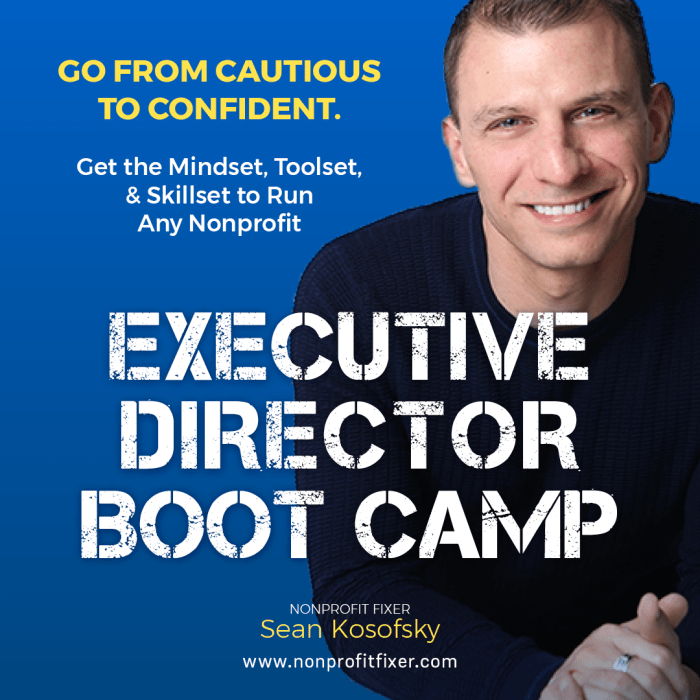
Leading a nonprofit is a marathon, not a sprint. It’s a journey of constant learning, growth, and a whole lot of heart. This guide is your cheat sheet for success, equipping you with the knowledge and skills to make a real difference in the world.
So go forth, embrace the challenge, and leave your mark on the nonprofit landscape. You’ve got this!
FAQ Overview
What are the biggest challenges new nonprofit CEOs face?
New CEOs often face a steep learning curve, juggling fundraising, program development, staff management, and board relations. They might also grapple with limited resources, navigating complex regulations, and building a strong organizational culture.
How do I find the right resources for my nonprofit?
There are tons of resources available to nonprofits, from online platforms like GuideStar and Charity Navigator to professional organizations like the Nonprofit Technology Network (NTEN) and the Association of Fundraising Professionals (AFP). Don’t be afraid to tap into these resources to gain valuable knowledge and support.
What are some essential skills for a successful nonprofit CEO?
Effective communication, strong leadership, strategic thinking, financial acumen, and a deep understanding of the nonprofit sector are all crucial for success. You’ll also need to be a passionate advocate for your organization’s mission and a skilled communicator who can inspire others to join your cause.

